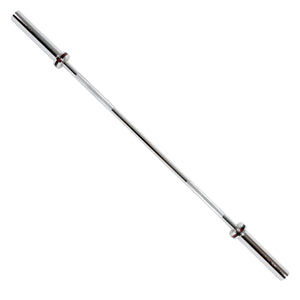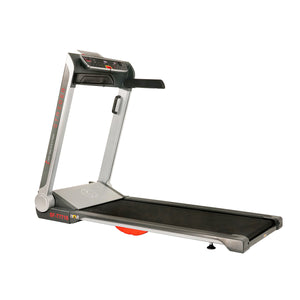You might remember fitness assessments from your high school P.E. class where your cardiovascular endurance, muscular strength, and flexibility were tested through a series of tests. Luckily, you no longer have to suffer through a mile run on the track in old, scratchy gym clothes to determine your fitness capacity. Fitness assessments have evolved from their physical education origins over the past decade into a tool that can be used in any fitness routine.
What’s the value of adding an assessment to your workout program? Fitness assessments are an excellent way to give you a current snapshot of your exercise capacity, how to set realistic fitness goals for yourself, and to periodically measure your overall progress. In other words, it helps you take a more targeted approach to your health and fitness journey.
There are various, practical fitness assessment methods you can implement right from your living room to get you jump-started and focused on a workout program that is right for your goals. Here we will discuss a variety of fitness tests so you can choose one that is right for you. Let’s dive in!
What if I Want to Use a Traditional Method of Fitness Testing?
That’s great! There is a reason these methods are tried and true; they are accurate measurements, and they work. A robust collection of normative data (results considered normal or healthy for your age group and gender) has been built up from years of research that you can use to compare your results. Or if you prefer you can compare your pre-workout program assessments to your post-assessments, you can go that route, as well. Your only competition is yourself! Below are a few options you can use to test cardiorespiratory fitness, muscular strength and endurance, or a combination of both.
Cardiorespiratory Fitness Assessment Examples
These tests measure your aerobic capacity and your body’s ability to use oxygen while exercising. This can be a good indicator of heart health.
- 1-mile run/walk test—This test is basically what it sounds like—it is measuring how fast you can run or walk 1 mile. You will test yourself before starting a fitness program, and then again, several weeks later to measure your progress. (1)
- Astrand treadmill test—Get an estimate of your VO2max (the maximum amount of oxygen your body can use while exercising) and then compare it to normative data to see if you fall within a “healthy” category. (2)
Muscular Strength/Endurance Assessment Examples
This indicates how much weight you can lift (strength) or how long you can do a specific movement before fatiguing (endurance).
- 1-RM test/Predicted 1-RM Test—Test your ability to lift a max amount of weight for various movements. Typical lifts include the barbell back squat and deadlift. You can go all out and test your 1 Rep Max (also known as 1-RM—the most weight you can lift in just one rep) or test your predicted 1-RM (the most weight you can lift for up to 10 reps, and then calculate your 1-RM). This is useful because you can then program your workout intensity levels from your 1-RM. If you choose to use this type of test, make sure you have a spotter with you for safety! (3)
- Push-Up Test—If you don’t have access to gym equipment this a great choice for testing upper body strength. Simply do as many push-ups as you can and compare your score to normative data to see if you fall within a “healthy” category. Or use it as a pre-and post-program assessment and compare your before and after measurements. (4)
Test Batteries
A battery is a compilation of fitness assessments all rolled into one big test. You typically have longer (but not too long, usually 1-5 minutes) rest intervals in between each test.
- Law Enforcement Test Batteries—Some examples that are included in these types of batteries are sit-up tests, sprint and endurance run tests, or push-up tests.
- Functional Fitness Assessment Battery—Developed by American Alliance for Health, Physical Education, Recreation and Dance (AAPHERD), this battery measures seniors’ functional ability through various cardiorespiratory, muscular strength, balance, and mobility tests. (5)
What do Fitness Assessments Look Like Today and How Can I Implement Them?
While traditional fitness testing methods are still commonly used, fitness professionals have come up with new and innovative ways to test progress without any fancy equipment necessary. This can be fun and creative, as you can choose your own adventure and build an assessment that caters to your particular goals. As a simple example, if your goal is to do 20 pull-ups, start by testing how many you can do right now. You can then cater your workout program to targeting muscle groups that will help you do more pull-ups. After 4-8 weeks, test again to check your progress.
If you aren’t quite sure where to start with this, here are some commonly used options to choose from:
- Beep test—Find the beep test audio on YouTube. Measure out 20 meters and try to get to the mark before the beep. If you miss twice, the test is over, and you record your time.
- 60-second test—Pick any bodyweight exercise and complete as many reps as you can in 60 seconds. You can pick one specific exercise you want to improve or pick a variety of exercises to create your own test battery.
- EMOM test—EMOM stands for “Every Minute, On the Minute,” which pretty much explains what you’re in for. Set a time for your test (i.e., 5 minutes). Then, at the top of every minute complete a designated number of reps for your desired exercises. For example, complete 10 burpees and 10 mountain climbers. When you complete the reps, rest, and wait for the next minute to begin the next round. Record how many reps you can complete each minute.
- AMRAP test—AMRAP stands for “As Many Rounds as Possible,” and during the test, you do just that. Choose 3-4 exercises and several reps for each. Set a time for your test (i.e., 5 minutes) and try to complete as many rounds as possible during this time frame. Don’t forget to pay attention to your form!
SunnyFit® STAR Programs
If this all seems a little overwhelming, don’t worry! SunnyFit® has your back. The recently launched STAR programs in the SunnyFit® app are goal-driven workout programs that have built-in pre-assessment and post-assessment fitness tests. Our certified SunnyFit® trainers have created each of these programs to achieve specific goals, covering workouts from dumbbell strength training to cycling to speed, agility, and quickness.
Fitness assessments are essential for anyone looking to improve their overall health and fitness. It provides a baseline for measuring progress and highlights areas of strength and weakness. It also helps to identify potential health risks, allowing for early intervention and prevention. Fitness assessments can be tailored to individual needs and goals, making them a valuable tool for anyone looking to achieve specific objectives. By incorporating regular fitness assessments into your routine, you can ensure that you are progressing toward your goals safely and effectively. So, whether you are a beginner or an experienced athlete, taking the time to assess your fitness regularly will help you achieve your goals and maintain a healthy lifestyle for years to come.
1. What is cardiorespiratory endurance and how can you improve it? Healthline, 2017. Cardiorespiratory Endurance: Tests and Exercises (healthline.com) Accessed 13 March 2023.
2. Astrand Treadmill Test, Topend Sports, 2019. Åstrand Treadmill Test (topendsports.com) Accessed 13 March 2023.
3. Physiological Assessments: Muscular Fitness Assessments, ACE, 2014. Physiological Assessments: Muscular Fitness Assessments (acefitness.org) Accessed 13 March 2023.
4. Fitness Self-Assessment, Hendrick Outpatient Rehabilitation. Fitness-Self-Assessment-for-HPU-1.pdf (hputx.edu) Accessed 13 March 2023.
5. Batteries assessing health related fitness in the elderly: a brief overview, European Review of Aging and Physical Activity, 2008. Batteries assessing health related fitness in the elderly: a brief review | European Review of Aging and Physical Activity | Full Text (biomedcentral.com) Accessed 13 March 2023.




























Add Your Name & Email
Please enter your name and email to continue.We won’t display your email publicly.